Kindness Campaign
Introduction
From a Needs-Based assessment, it became apparent that there was a need for change at Achievement First Providence Mayoral Middle School. Daily interactions between students as well as students and teachers supported this claim. Many students did not feel supported or connected to their teachers while teachers struggled to relate to students. The impact of this disconnection was many inappropriate reactions, low compliance, low student participation, and low academic success. Given the permeability of this action, students choose to create a kindness campaign to initiate change in their school culture. The results of this campaign are annotated below.
The Need
Based on a Needs Assessment taken during the Fall of 2018, 85% of students reported they felt kindness in the school community was important. Unfortunately, only 57% of students reported they felt satisfied with kindness in the school community. This is the effect of prevalent name-calling, disrespect, and a lack of support amongst students. As a result, students have become less invested in school.

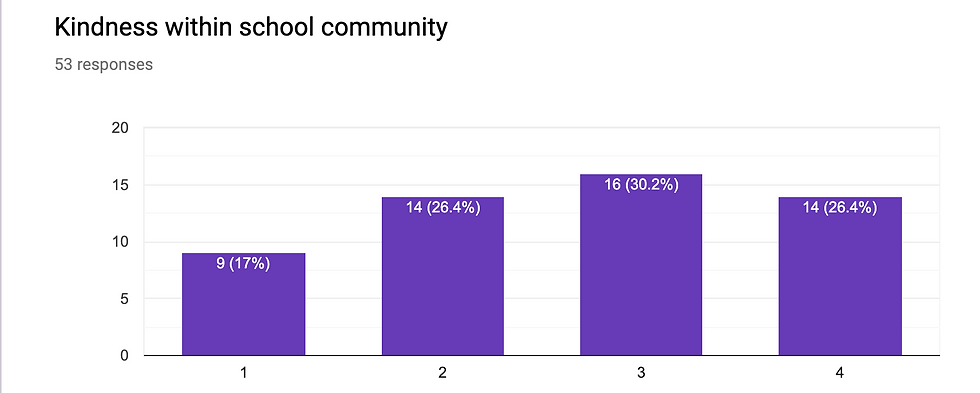

The two pieces of evidence above demonstrate students perception of how important kindness is in the school community (Image 1) compared to students' satisfaction with kindness in the school community (Image 2).
Explicit Instruction
After analyzing the results of a Needs Assessment, I taught students explicitly about advocacy. For this lesson, students were introduced to the topic of student advocacy by evaluating a scenario, looking at students in action via Citizen Kid, and hearing my own personal story to social responsibility. As we progressed through this lesson, it was clear students were enlightened by the opportunity social responsibility brought to change the challenges they identify daily. The impact was notable with school leaders walking into the room and commenting on the high level of student engagement.
Following students' discussion, students worked together to identify topics they would like to create change on. Two major topics students highlighted concern around was the school-wide behavior management cycle and bullying. From these topics, students began to create action plans to outline how they would advocate for change. During this activity, I activity circulated the room and engaged with each group to identify leaders. These leaders were invited to a focus group meeting during lunch to take action on one specific topic of change. The results of this are discussed in the next section.
Focus Group
After facilitating a lesson on student advocacy, seven students were chosen to participate in a focus group meeting. My student participation selections were extremely intentional. There were students who have already established themselves have leaders in the classroom, students who typically follow the norm of the group, and students who struggle to advocate for themselves or others appropriately. Ensuring that this focus group had a diverse representation of the class' personalities was important for all voices to be heard and represented. Student discourse is annotated and recorded below.
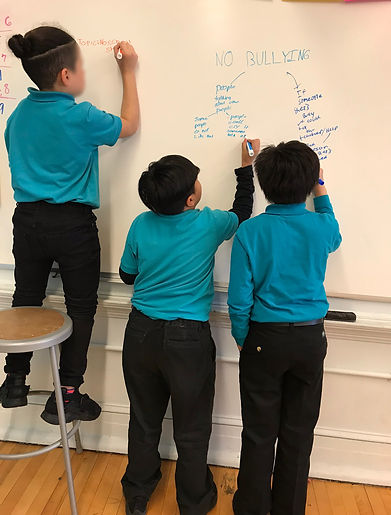
The image above shows three students working together to brainstorm possible solutions to prevent bullying at Achievement First Providence Mayoral Middle School. Students created a web diagram naming their topic, causes, and concluded with ideas for a solution. Once students spent 10 minutes brainstorming, they came together to discuss how they would take action including next steps and commitments. These conclusions can be heard in the recording below.
Kindness Activity
The focus group identified various strategies for the Kindness Campaign. The first step was to present their campaign to all classrooms. During this presentation, students participated in an activity in which students interacted with their seat partner. During the first round of participation, students said one mean statement to their partner and vice versa. After each parties statements were made, students shared how they felt with one another. A classroom debrief illuminated the negative emotions associated with mean comments and students shared how these comments could impact their day.
After that debrief, students made two nice statements to their partner and vice versa. Immediately after students' comments were made, there was an immediate shift in the tone of the classroom. Students were smiling and began talking more with one another. At this point, a discussion continued - comparing and contrasting the two experiences. Students shared the positivity they felt when someone told them a compliment. One student commented, "It makes me want to pay it forward and give a positive comment to someone else". By the end of the class, students were walking around giving each other high fives. A GIF of this is seen below.
Campaign Posters
Once the whole school was introduced to the idea of the Kindness Campaign, student leaders began to create campaign posters. These posters were used to permeate their message around the school. They reminded students of the topics and feelings they had during the kindness activity. Students capitalized on their skills from graphic design such as font, letter, layout design, and messaging to spread the word. Pictured below are three examples of different campaign posters created by students.
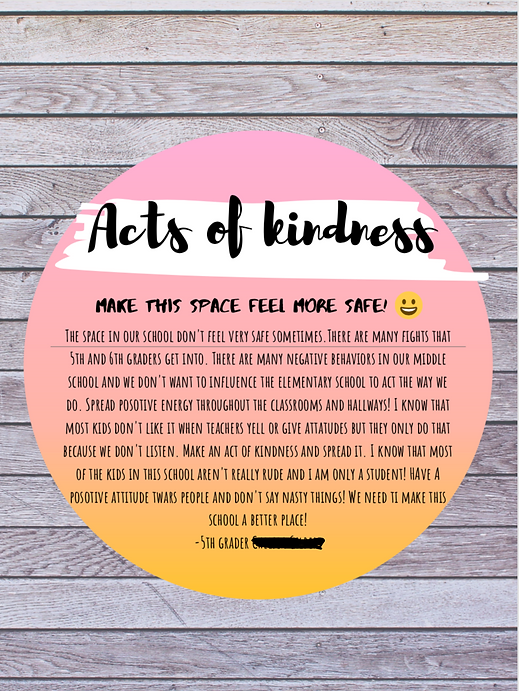
In this piece of evidence to the left, this student created a poster sharing her personal experience of kindness in the school community. By stating her truth and proposing solutions she is demonstrating advocacy for her school community.
In this piece of evidence to the right, this student has provided Acts of Kindness suggestions that students could use to spread kindness. By listing her suggestions as bullet points she is enabling students to choose an independendt action that would spread kindness.
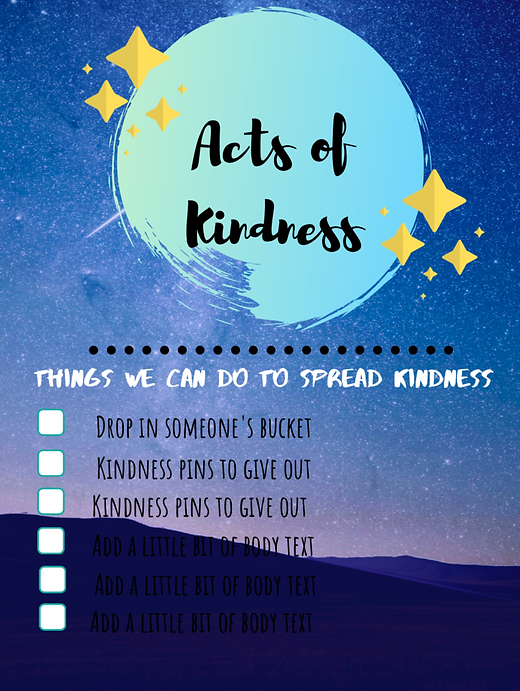
In this piece of evidence to the left, this student created a trifold poster to share more information with her audience. By defining bullying she is educating the school community about the issue and how to become aware of it - qualities of an advocate.
Kindness Pledge
A final component of the Kindness Campaign was a kindness pledge that occurred during a community meeting on Friday. Students entered the auditorium and sat with their class. After a few announcements from school leaders, students took the microphone. Their presentation began with a recap of their kindness activity and the campaign posters around the school. Students shared statistics about bullying the effects that not spreading kindness can create on a school community as well as within individual students. During a poll, all students rose their hand in agreement to the following statement.
At least one time during the school year, I have felt bullied or experienced a mean comment that has resulted in me not wanting to come to school.
After connecting with the audience, there were student speeches. During this time, ten students shared their personal stories. Students shared when they experienced bullying, and when they felt they were bullying someone else. Being able to hear both sides of a bullying experience was important for both bullies and their victims. Many students were crying and hugging one another by the end of the presentation. The group immediately felt a sense of community within the room. As students left the auditorium, they signed a kindness pledge on a sticky note, as seen in Image 2.
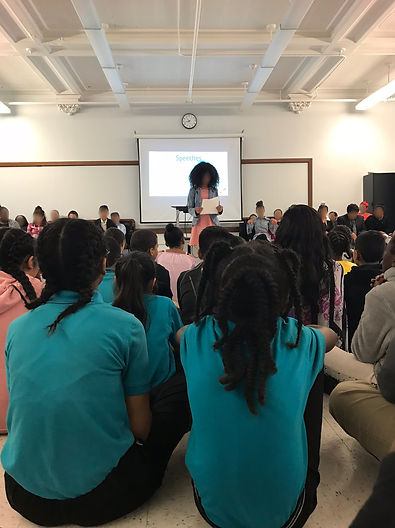
In the image above (Image 1), students are seen sitting silently, listening to their peer share a personal story of bullying. In this instance, the student shared how she felt bullied when her peers made fun of her for being "smart". She expressed how it made her feel like not always trying her best. By the end of her speech, students began chanting her name.
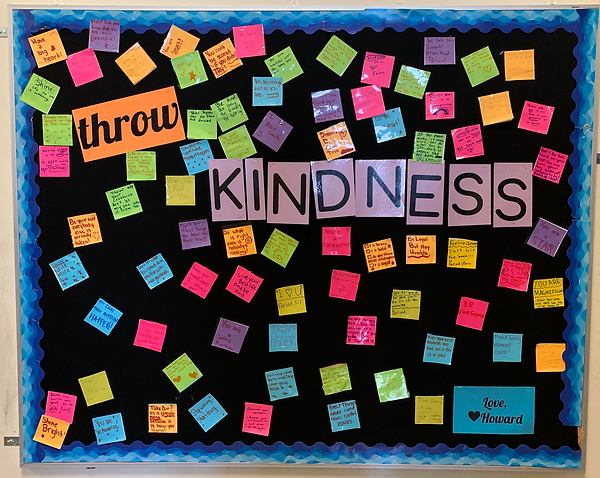
In the image above (Image 2), students kindness pledges are captured based on homeroom. Once all the kindness pledges were gathered at the conclusion of the ceremony, the student leaders on the Kindness Campaign laminated and organized them by homeroom. Each homeroom had a bulletin board outside of their classroom decorated with their pledges.
Conclusion
Student advocacy is a key component in creating a strong school culture. As an educator, it is important to ask for and listen to students voices and opinions. The Kindness Campaign was an example of this. Even prior to the Needs Assessment, there were clear challenges in the culture at Achievement First Providence Mayoral Middle School. It was apparent students did not feel supported and the data from the survey only supported it. By faciliating a lesson on student advocacy and focus group meeting, we - as a school community - were able to identify the root causes of our challenges. Students were honest and open sharing not only their experiences but solutions to the problem. From this, students truly became advocates. They created a kindness activity to introduce the idea to all classes, created campaign posters, lead a kindness pledge during community meeting, and organized the pledges of their peers to continue the conversation. From this experience, my students have been able to find their own voice and use it to faciliate the change they want to see. Student advocates have become leaders within the school community and themselves.